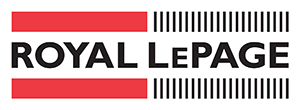First-time buyers information and tips
James Harrison from Mortgage.ca wrote an excellent article

Are you a first time home buyer? It’s important that you review the real estate market carefully and consider all available benefits you can receive by becoming a homeowner for the first time. Through close analysis of the full range of government programs, you can make significant savings on your total home purchase costs. In this post, we’ll take a look at several first-time buyer benefits you can’t ignore.
The Ontario Home Ownership Savings Plan
For those just considering the idea of purchasing their first home, the Ontario Home Ownership Savings Plan could offer a significant financial boost. The plan allows first-time buyers to open a savings account at their institution and contribute a set amount of their income for a $500 rebate through their tax refund. For a couple saving for their first home, the amount doubles to $1000 per year, which can then be used to boost housing purchase resources.
The Home Buyer’s Plan
The Home Buyer’s Plan or HBP allows a person to take money from their RRSP and use it to fund their home purchase. Borrows are allowed to take up to $25,000 from their RRSP. For couples who both qualify for the Home Buyer’s Plan, a maximum $50,000 RRSP withdrawal amount is allowed.
To qualify for the Home Buyer’s Plan, you must have lived in a home that is not owned by you or your spouse for the past five years. You must also intend to use the home you’re buying as your principal residence. It’s a program that can help buyers significantly reduce their monthly mortgage costs by placing a larger down payment on properties.
First-Time Home Buyers’ Tax Credit
The First Time Home Buyers’ Tax Credit can either be claimed by the person buying the home or their spouse. When they file their taxes the year after completing the purchase. The tax credit is $5000 on a qualifying property and is applied if you did not live in a home owned by you in the preceding four years.
Land Transfer Tax Refund
Under the Land Transfer Tax Refund program, the Ontario government refunds buyers up to $2000 on the land transfer tax they pay for their first home. This can help minimize a buyer’s tax burden for their first year of ownership and helps them stabilize their finances to ensure a strong foundation moving forward.
There are, however, several important stipulations to consider when applying for the Land Tax Transfer Refund. Firstly, the application must be made no later than 18 months after registering the home purchase. In addition, you cannot have owned a home anywhere else in the world when you apply for the refund.
It is a process...
Buying a home for the first time is a process, so don't get overwhelmed, take one step and a time. You will get there.
Step 1: Figure out how much you can afford.
Falling in love with a house you can’t afford can be heartbreaking. Avoid disappointment by figuring out your budget before you start looking.
- First, decide how much you can afford for your down payment. The Home Buyers' Plan (HBP) allows you to withdraw up to $60,000 from your Registered Retirement Savings Plans (RRSPs) to buy or build a qualifying home. You must be a first-time home buyer or buying for a disabled person. The withdrawn amount must be repaid within 15 years. More on that here. The bigger your down payment, the less principal you will owe, and the less interest you will pay.
- Don’t forget about closing costs, like insurance, legal fees, home inspection costs, land registration and land transfer fees. Add those to your moving expenses and service hookup fees, and they can add up surprisingly fast.
- Your monthly housing expenses (mortgage, taxes, heat, etc.) shouldn’t use up more than 32% of your income. (If your combined monthly income is $5000, for example, 32% of that is $1600.) If you have car payments or credit card debt, the rule of thumb is that debt repayment shouldn’t be more than 40% of your income.
- Get pre-approved for your mortgage. It’s a good way of finding out how much you can borrow – and it speeds up the process once you’ve found the home you want to buy.
Step 2: Figure out what type of home is right for you.
Sit down and make a list of must-haves and nice-to-haves. Be realistic, but be clear about the features you can’t live without. How many bedrooms do you need? Bathrooms? Do you want a home office? A garage? How about a big backyard? Hardwood floors? Eat-in kitchen? Consider your lifestyle and your stage of life. If you’re planning kids in a year or two, the studio loft might not be your best bet.
Step 3: Decide where you want to live.
Living in an area you like is as important as buying a home you love. Do you want a busy urban lifestyle, a house in the ‘burbs, or a quiet place in the country? Do you want to walk to work or are you okay with a longer commute? Do you need to be close to good schools? Rec facilities? Shopping?
Step 4: Start looking.
Go to open houses. Visit mls.ca. Check the classifieds. Drive around neighbourhoods you like looking for For Sale signs. Talk to your REALTOR® about your needs and start looking at properties.
Step 5: Build a team.
Put together the right group of experts to help you buy. Start with a REALTOR® you trust, then look for a reputable lender or mortgage broker, a lawyer (or a notary in Quebec), a home inspector and an insurance broker. Your REALTOR® works closely with all of these professionals, and will be happy to recommend people you can depend on.
Step 6: Make an offer.
You’ve found the perfect place – now it’s time to make an offer. An offer to purchase includes the purchase price you’re offering, chattels to be included in the purchase (like appliances or light fixtures), the amount of the deposit, the closing date and any other conditions.
Your REALTOR® will help you prepare your offer, and will present it to the vendor, who will either accept it or make a counter offer (which asks for a higher price or different terms). You can accept or reject the counter offer. If everyone agrees, the home is yours. If not, you can make another offer, or you may have to keep looking.
Step 7: Get a mortgage.
Once you’re approved, you’ll need to decide what type of mortgage works best for your needs. Will you go with a fixed or variable interest rate? Will your mortgage be closed or open? What will your amortization period be? Will you make payments monthly, biweekly or weekly? Your mortgage broker or lender can help you find a mortgage that suits your needs – and saves you the most money in the long term.
Step 8: Move in and enjoy!
Trademarks owned or controlled by The Canadian Real Estate Association. Used under licence.



